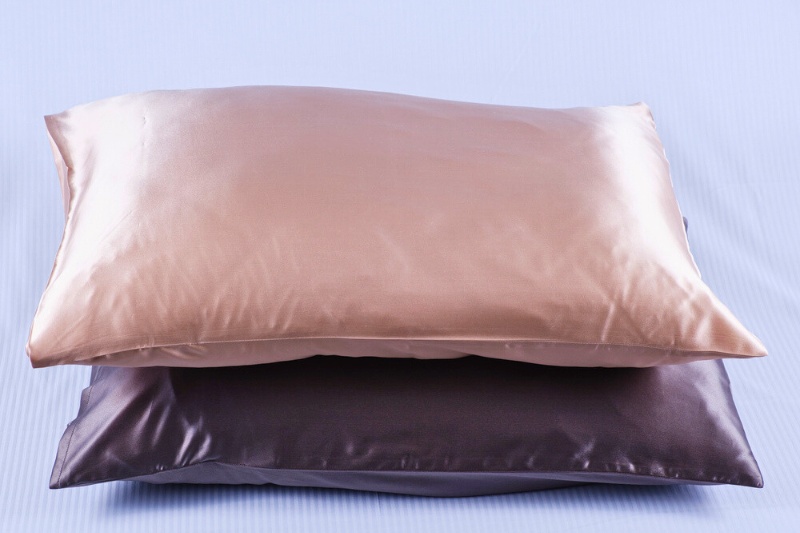Satin pillowcases are one of the most luxurious pieces of bedding you can own.
They work wonders for looking after your skin and hair, and have a silky smooth texture that feels lovely against your skin. If you’ve made the switch to satin pillowcases, you’ll have the best beauty sleep ever!
However, caring for satin pillowcases takes a more gentle approach than what’s needed for standard bedding.
If you’re unsure how to maintain the shine and wash your new pillowslips without damaging the fabric, you’re in the right place.
This is a complete guide on how to wash satin pillowcases—and the process is easier than you might think!
How to Wash Satin Pillowcases in the Washing Machine
Most satin pillowcases can be laundered in the washing machine for quick and easy cleaning.
However, satin is a delicate material that must be handled carefully. If you don’t use proper washing practices, your pillowcases will lose their smooth texture and shine.
To help you get clean satin pillowcases without causing damage, follow this process:
1. Check the care label for washing instructions

Always start by checking the care instructions on the label of your satin pillowcases.
While most are machine washable, some satin fabrics (such as 100% silk) may have specific recommendations that you should follow.
Here are some common types of satin pillowcases and general washing guidelines:
- Polyester satin: Polyester satin is a synthetic fabric that is commonly used for affordable satin pillowcases. Many polyester satin pillowcases are machine washable, and they may even be more durable than natural silk.
- Polyester blends: Some satin pillowcases are made from a blend of polyester and other materials, such as cotton or spandex. These blends may offer additional benefits, such as increased breathability or stretch while remaining machine washable.
- Machine-washable silk: While traditional silk is considered a delicate material and may require more gentle care (hand washing or dry cleaning), some silk satin pillowcases are specifically designed to be machine-washable.
2. Prepare your satin pillowcases for washing
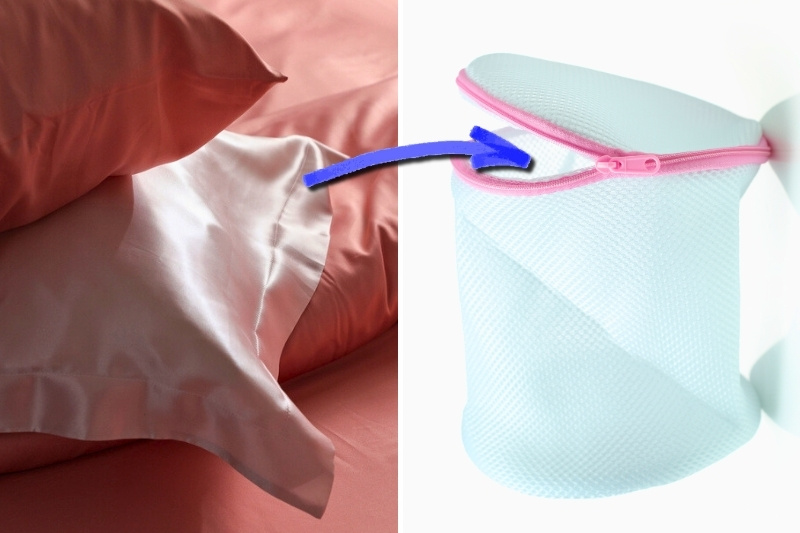
Once you’ve checked that your satin pillowcases are indeed safe for machine washing, you’ll need to do a few quick things before throwing them in the drum.
These steps are crucial. They help to protect the delicate material and ensure it survives the wash:
- To minimise friction and protect the outer surface of the satin, turn the pillowcases inside out before placing them in the washing machine.
- Place the satin pillowcases in a mesh laundry bag to provide an extra layer of protection and prevent them from getting tangled with other items in the wash.
- To prevent colour bleeding, wash satin pillowcases with similar colours. Dark pillowcases should be laundered with dark fabrics, whereas light pillowcases with light materials.
- When preparing your laundry load, avoid washing satin pillowcases with rough fabrics or items with zippers or buttons. These could snag the delicate silky material.
3. Launder in the washing machine
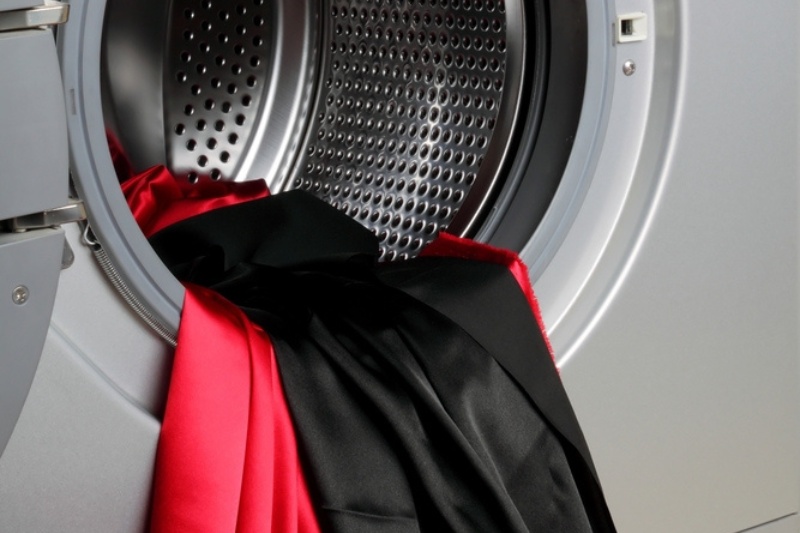
You can now put your satin pillowcases, and any other items you have carefully selected based on their colour and material, into the washing machine.
Don’t overcrowd the washing machine, as this can lead to excessive friction and damage the satin fibres.
When using the washing machine:
- Select a delicate or gentle cycle: Gentle and delicate cycles use cold water and slow spin speeds, which are essential in maintaining the texture and appearance of the satin pillowcases. Hot water can damage the fabric and cause colours to bleed, while a fast spin can cause the fabric to snag.
- Choose a mild detergent: Ideally, look for a liquid detergent specifically designed for delicate materials like satin, satin blends, and silk. Avoid using bleach or fabric softeners, as they can damage the satin fibres and cause your pillowcases to dull.
- Opt for an extra rinse cycle: Although not essential, we recommend putting your satin pillowcases on for an extra rinse cycle. This ensures that the pillowcases are thoroughly rinsed, and no detergent residue remains, helping to keep their shine.
4. Dry the pillowcases gently
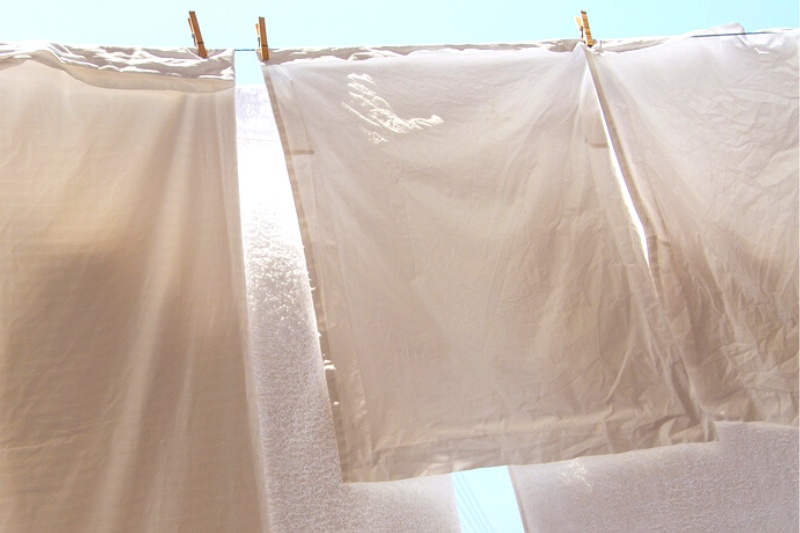
After the wash cycle, remove your satin pillowcases and allow them to dry. However, you must take care, or the pillowcases can stretch, shrink, or wrinkle.
Air drying is the gentlest method for drying satin pillowcases. However, depending on the precise blend of fibres, hanging the pillowcases on a clothes airer can cause the fibres to stretch.
Water makes silk and wool more elastic, and they can stretch under the weight of the wet pillowcase.
A better and safer option is to lay them flat on a clean, dry towel (the fluffier the towel, the better).
When putting your satin pillowcases out to dry, ensure they are not exposed to direct sunlight for an extended period, which can fade the colours.
You should also never put satin pillowcases in the tumble dryer, even on a low heat setting or delicate drying cycle.
As the fabric is delicate and sensitive to heat, there is no way to speed up the drying process without causing accidental damage. You just need to be patient.
How to Hand Wash Satin Pillowcases
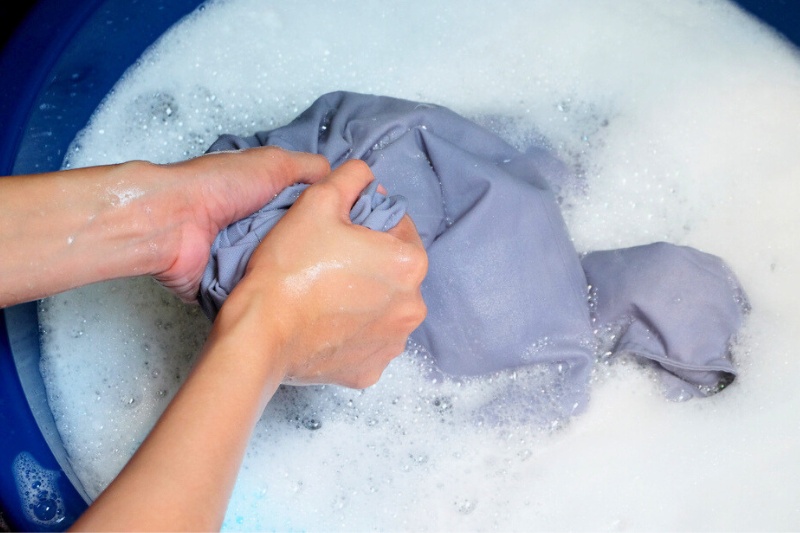
If your satin pillowcases aren’t machine washable or you want to be extra cautious, hand washing is generally a gentler option for satin.
However, it’s essential to still handle the fabric carefully to maintain its luxurious feel.
Here are the steps you need to follow:
- Fill a sink or bucket with lukewarm or cold water. Avoid using hot water when washing satin pillowcases, as the heat can damage the fabric.
- Add a small amount of mild liquid laundry detergent designed for delicate fabrics to the water. Swirl the water gently using your fingers to create suds.
- Place the satin pillowcases in the soapy water. Gently agitate the water with your hands to ensure that the detergent is evenly distributed.
- Use a soft cloth or sponge to clean the pillowcases gently. Pay attention to any soiled areas or stains. Avoid scrubbing vigorously to prevent damage to the delicate fabric.
- Drain the soapy water and refill the sink with clean, cold water. Submerge the pillowcases and gently agitate the water to rinse out the detergent thoroughly.
- After rinsing, carefully press the water out of the pillowcases. Avoid wringing or twisting the fabric, as this can distort the satin fibres.
- Lay the pillowcases out to dry on a clean, dry towel. Smooth the surface using your hands to prevent wrinkles from forming.

How Often Should You Wash Satin Pillowcases?

How often you wash your satin pillowcases depends on factors such as personal preference, skin type, and hair condition.
However, a general recommendation is to wash satin pillowcases every one to two weeks. This is the usual timeframe for washing pillowcases in general.
As you sleep, pillowcases can accumulate oils, sweat, and hair products, and washing them regularly helps maintain their smooth texture and ensures a clean sleeping surface.
If you have sensitive skin, acne-prone skin, or oily hair, you might consider washing your satin pillowcases more frequently to prevent the buildup of oils and bacteria.
If you notice any stains or spills on the pillowcase, it’s also a good idea to spot clean or wash it more often to prevent the stains from setting in.

Hannah has a passion for cleaning. She worked her way around Australia by cleaning hostels in exchange for free accommodation and used her cleaning skills to bag a job as a chalet host for a luxury ski company in France.
